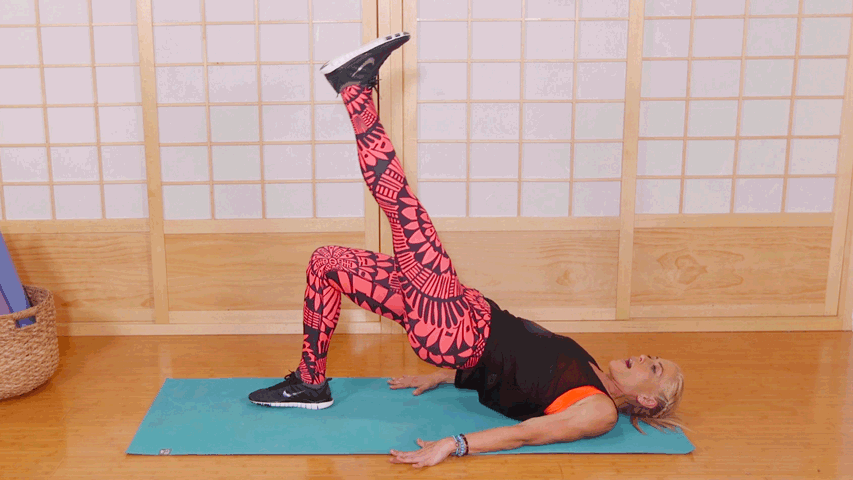How to Get the Results of a 45-Minute Workout in 10 Minutes With ‘HIIT’
Last Update: August 16, 2025
The acronym “HIIT” looks kind of how the workout itself feels. Aggressively all caps, short but effective—it’s like it’s yelling at you.
HIIT stands for high-intensity interval training, an exercise style that’s become insanely popular for two reasons. First, it has been scientifically proven to burn fat more quickly than other types of exercise. Second, it takes as little as 10 minutes to do a full session that’s just as effective as 45 minutes of a moderate-intensity workout.
Here’s the catch: true HIIT is insanely hard. For a short period of time—anywhere from 10 seconds to 2 minutes—you push your body to the maximum. After that super-challenging burst, you do an active recovery for a few moments to slow your heart down, and then repeat the whole cycle again, anywhere from two to 20 times.
To some people, it sounds totally miserable. But to the person who wants to get a sweaty, intense workout in and see results quickly, it’s well worth it. Here’s why HIIT works—and why you should consider adding it into your exercise regimen, regardless of how much you might hate working out.
Why HIIT works
It’s anaerobic + aerobic
Although HIIT workouts have only recently become popular, the principle itself isn’t new. Long-distance athletes have incorporated interval workouts in their training for ages, to increase speed and power (grueling fartlek runs are common at high school track practice), as have football and basketball players who want to get stronger.
HIIT is an ideal way for athletes to cross-train because it challenges the aerobic and anaerobic energy systems, improving overall fitness. Aerobic exercise is probably what you’d consider “normal” cardio—it elevates the heart rate and forces you to breathe heavily, but is sustainable for an extended period of time. Running at a constant speed, spinning, hiking, kickboxing are all considered aerobic.
Anaerobic exercise, usually performed in short bursts, translates to “without oxygen,” an apt description of how you feel while you’re doing it. Done right, it’ll leave you breathless and panting. During such a workout—think of sprints or plyometrics like burpees—your muscles experience a temporary lack of oxygen and are forced to burn through glycogen and fat for fuel.
Aerobic exercise challenges cardio endurance and anaerobic exercise builds lean muscle mass. So in lieu of alternating between long cardio sessions and weight training, with HIIT you get a balanced workout in one fell swoop.
It increases power
HIIT’s positive effect on endurance is impressive. But for casual athletes who want to shave a few minutes off their mile time or add a little more weight onto the squat rack, increasing overall power is equally important. “Power” basically equates to how explosively you can use your muscles; for example, an athlete who has a really high vertical jump probably has powerful legs.
Runners who do HIIT training see a boost in power in their legs that helps them push through tough uphill climbs, sprint more quickly, and run faster in general. When cyclists replaced 15 percent of their moderate-intensity exercise with high-intensity over four weeks, they saw a 150 percent increase in peak power and a significant improvement in their time trials.
It burns fat
Because it involves aerobic and anaerobic energy systems, a high-intensity sweat sesh will both torch calories and increase lean muscle mass. This combo is a double-whammy for fat burning, and studies show that HIIT workouts boost metabolism and burn more calories in the 24 hours following than other types of exercise.
And that extra lean muscle is what continues to burn fat (not glycogen, the energy source muscles usually rely on) hours after you stop exercising. In a study of overweight adolescents who tried high-intensity workouts three times a week for 12 weeks, participants lost an average of 17 percent body fat and inches off their waistlines.
It’s versatile
Here’s the best thing about HIIT training—anyone can benefit from it, regardless of how athletic you are. In fact, if you’ve fallen off the exercise wagon more than once, high-intensity training might be what you’ve needed all along. In a review completed by the University of Notre Dame School of Medicine, researchers found that exercisers are less likely to quit if they follow HIIT workouts. Maybe it’s because they’re shorter, or harder, or more effective. Regardless, it’s probably one of the best arguments for why everyone should start training this way at least once a week.
Plus, there are so many different ways to do an interval workout that you’ll never get bored. Here are just a few examples:
Build your own HIIT workout
Here’s how it works—choose five of these different exercises. After a quick warm-up, do your first move for 20 seconds, and then hold a plank position for 2 minutes. Next, do the second move for 20 seconds, then take a 2-minute plank break. Repeat until you’ve made it through all five movements—you should be seriously sweating! Celebrity trainer Lacey Stone, who trains her clients using a HIIT formula, demonstrates ten of her favorite interval exercises.
Side-to-side lunge
Back lunge + kick
Kick claps
Running man
Push-up + twist
Tricep dip can-can
One-legged hip raise
Tabletop kicks
Scissor kicks
Jackknife sit-ups
Doing at least one interval workout a week seems to have benefits, but you’ll see the best results from a three-times-weekly regimen. Give it a try on your own (or head to a workout class that uses HIIT) and see how it goes!









